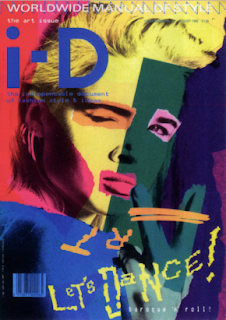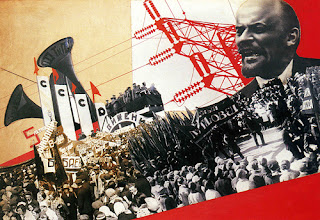We live in a post modern era.
'Ironic'- key trait.
Sense of positivity: Art, design and culture. Building a utopia; better, positive world.
Rules of Modernism limiting (form follows function)
Modernism removes humanity, personality, originality.
MODERNISM: Experimental, purity, innovative, original, individual, serious.
POSTMODERNISM, characterised: Exhaustion, pluralism, pessism, dissillusionment, with the idea of absolute knowledge.
Not opposites, interelated.
Postmodernism: celebration of modernity, a response: negative, sarcastic reacts to modernism.
'Homeage to New York' Jean Tingley- Rebelion of modernity. Made of junk. Designed to destroy itself-
no function, blowing up the modern world? No aesthetic considerations.
Starts to take shape in 60's
1960's beginning
1970's established as term (Jencks)
1980's recognised style
1980's & 90's dominant theoretical discourse
Now tired and simmering- post, postmodernist era?
- after modernism
- historical era following modernism
- equivelant to 'late Capitalism' (Jameson)
- artistic and stylisic eclecticism
- 'global village' phenomena: globalisation of cultures, races, images, capital, products- world is reduced.
- started by modernism railroads, telegram etc.
- postmodernism interconnected world internet?
Modernism died 15th July 1972 3:32pm: Charles Jencks- demolition of Pruitt
Modernist building housing project- ghettos slums. Condensed people together- not a community.
to save American society after the war, the building was destroyed: symbol of failure of modernism, reality of modernism.
Postmodernism- started with idea that modernism is wrong, failed us.
Utopia & technological determinism: developement not always good for society, eg. Internet is good for the world but a chance for crime, stolen identity, porn etc.
Postmodernism- questionning conventions (especially those set by modernism).
Modernism: Equality, Postmodernism: Individuality
Postmodernism rejects rules and conventions- society gets confused so many options, too much choice.
Celebrate what has been discarded.
London- Postmodern city
New York- Modern city, form follows function
Makeover modern buildings. Sheffield Hill flats. AT&T building, Philip Johnson.
Mixing the old and new, takes seriousness of modernism away. Makes more human and fun. Refernce to old form of architecture made new... folly outside college failed, being 'ironic'.
New buildings that revive the past- postmodern reaction to ugliness of modernism.
Modernism is a lie... imposing visions in the rest of the world, ideaology, utopia. Entire communist society- impossible.
Totalising belief sysems. Crisis in confidence- dont know where wer going- Postmodernism, who am I? Splitered broken society- competing, people forming subcultures as opposed to a culture.
Robert Venturi... learning from Las Vegas- ultimate rejection of structured city.
Hybrid rather than pure.
For modernist Las Vegas represents destruction, degeneration of the world. Postmodernism celebrates this thought, out with modernism.
Advertising has more effect than fine art in postmodern world.
POSTMODERNITY
- A vague disputed term.
- Pomodernist attitude of questionning conventions.
- Space for new voices.









